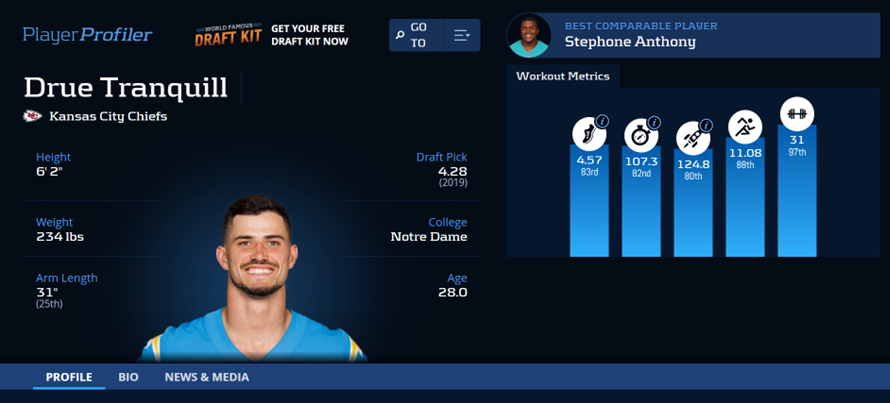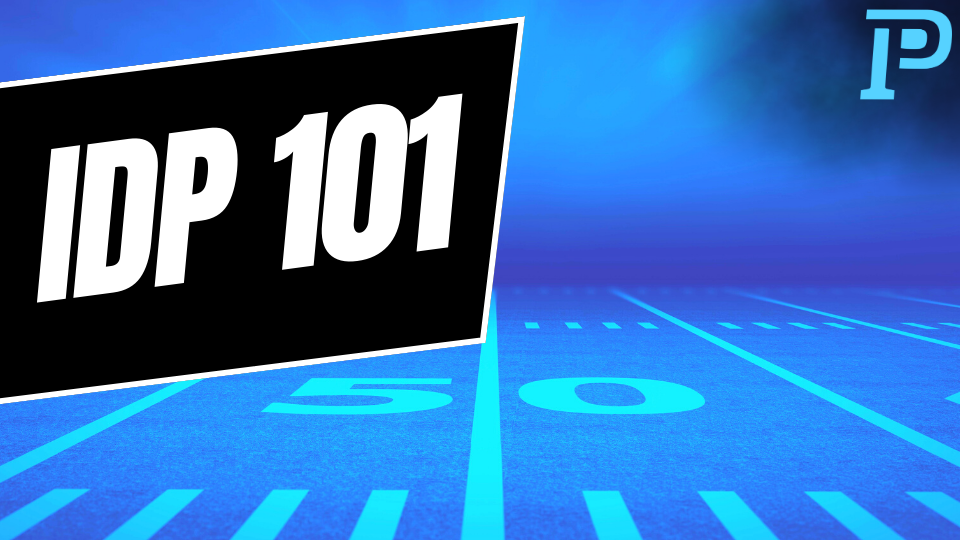How Deep Is Your Love?
The next big wave of your fantasy football growth is here, and it’s as simple as adding Individual Defensive Players (IDP) to your league. Fantasy Football IDP players may be considered sickos by some, but to me it’s just the next step in truly loving the game of football. We all love the game, so why not add one more reason to follow the action? You may think watching your player score a TD is fun – just imagine the pure thrill that comes over you when your cornerback gets an interception, or your defensive end gets a sack. You may be thinking that learning about the defensive side of the ball in the way we hyper-analyze the offensive side is a bit overwhelming. But don’t worry – here I’ll break down what you really need to know to play in an IDP league.
Getting Started
There are a few ways to go about learning IDP – the easiest being starting a new league or taking over an orphan. But what if you want to add IDPs to an already existing league? In my home league a couple years ago, we started with just one IDP flex spot that you could fill with any defensive player in the league. That is a great way to dip your toes into the IDP waters without going too deep into it. The next year, we graduated from one IDP flex to 1 DL, 1 LB, 1 DB, and 1 IDP Flex. Unfortunately, Sleeper doesn’t have DT, DE, LB, CB, and S designations – just the three basic positions: DL, LB and DB. That is plenty to start with, but we will go over all the positions in this article.
I highly recommend playing with one of each position approach over only 1 flex as basically everyone started a LB in the singular IDP flex league. Having one of each position forces you to pay attention to defenses in the best way possible. I also play in leagues where you start 11 defenders, like an NFL defense. It is a ton of fun, but I recommend starting small if you are a beginner. A start-11 IDP league can be a long-term goal. Now that we have formatting recommendations, let’s do a quick rundown of the basic scoring and then positional advantages.
Scoring
- Solo Tackle: 1 pt
- Tackle Assist: .5 pt
- Tackle For a Loss: 0.5 pt
- Sack: 2 pts
- Interception: 3 pts
- Pass Defended: 1 pt
- Forced Fumble: 1 pt
- Fumble Recovery: 1 pt
- Safety: 2 pts
- Blocked Kick: 2 pts
- Touchdown: 6 pts
This is the scoring from The IDP Guys and it is fairly standard. One thing to note is that a lot of categories stack. For example – a sack is counted as a sack, QB hit, a tackle, and a tackle for loss.
Linebackers
Linebackers are essentially the quarterbacks of IDP leagues. They are on average the highest scorers and the backbones of strong IDP teams. In 2022, eight of the top-10 and 17 of the top-20 IDPs were linebackers. This is because most IDP scoring is based around tackles. A really easy IDP cheat code is simply getting the middle linebacker (MLB) associated with either a high octane offense or a very bad offense.
Play volume is key in IDP, and if teams are constantly catching up or constantly running out the clock – MLBs are the biggest benefactors. For example, those eight linebackers that finished top-10 were on these teams – the Jaguars (Foye Oluokun), Ravens (Roquan Smith), Chiefs (Nick Bolton), Colts (Zaire Franklin), Eagles (T.J. Edwards), Chargers (Drue Tranquill), Panthers (Frankie Luvu), & Rams (Bobby Wagner).

Drue Tranquill Advanced Stats & Metrics Profile
Safeties
Because tackles are so key, certain Safeties can also provide a similar safety net as linebackers. Jalen Pitre finished top-10 last season on the strength of 147 combined tackles. Derwin James is typically regarded as one of the best IDP assets because of this as well. Essentially, strong safeties with a nose for the ball like Pitre, James, Jamal Adams, and others are also very important to your team. Much more so than free safeties that rely on random passes going their way.
Defensive Ends/Edge Rushers
One big problem with IDP is the erasure of EDGE designation. Some EDGEs are labeled linebackers and some defensive ends, depending on the platform. For the most part, though, you will rely on pass rushers for the defensive line spot in Sleeper. Tackles are the centerpiece of scoring, but you also need players that get sacks as those are worth a lot more points. Maxx Crosby was the highest scoring defensive end last season not only because he had a solid 89 combined tackles, but also 12.5 sacks. Crosby also benefitted from turnovers, which are great for getting points – just less predictable. That brings us to the next position: cornerbacks.
Cornerbacks
Cornerbacks (and defensive tackles) are rarely used in Sleeper IDP as there is no CB or DT designation. For the defensive line spot, it’s usually best to go with a pass rusher. And for the defensive back spot, it’s usually best to go with a safety. However, there are still CBs that can be relevant and there are some ways to identify which ones will be the most valuable. It will vary week to week, but one thing you will find is that being a good cornerback in real life doesn’t make you a good one in fantasy.
Just as with offensive players in fantasy, volume is king in IDP, and good corners are rarely targeted. Because of this, I have found two paths to CB success. 1.) Rookie CBs seem to be targeted a lot, thus they have more opportunities for tackles, defending passes, and interceptions. 2.) streaming CBs week to week against teams that hyper-target their WR1. Basically, start any CB against Cooper Kupp, Stefon Diggs, Davante Adams, etc. And finally, there are also some CBs that blitz a lot – we saw this last season with L’Jarius Sneed. Again, for these riskier positions, you need to chase turnover potential.
Defensive Tackle
As mentioned previously, defensive tackles are usually avoided in IDP formats. They score the least points and are the least predictable. With DT, you can probably get away with starting the same one every week because of the difficulty predicting their performance. However, like CB, there are some ways to know when to start certain DTs. There is variance, but I find that playing a DT against pass-heavy teams can be a good way to scrape some extra points.
Pass deflections are worth a decent bit in some leagues and that is one of the best ways for DTs to get points. Another is playing against teams with true power running backs. running backs rarely run straight into the DT, but some do. And when you notice that trend, start a DT against that running back when possible. Overall though, DT is one of the hardest to navigate and it’s difficult to say it would be worth streaming DTs when you should probably just trade for one of the premiere DTs.
Building Your IDP Roster
Now that you know the differences between the positions in IDP, it’s time to build out your roster. The first and most important question to ask yourself is how much time you can dedicate to researching the waiver wire. One thing that is always true in IDP leagues is that you can stream fairly easily. There are many relevant defenders in the league for fantasy scoring purposes. If you feel you have the time to really put in the work to identify good matchups, then I suggest stacking your offense and not getting many star IDP players.

Derwin James Advanced Stats & Metrics Profile
In the long run, it’s easier to find defensive depth than offensive depth. But if you don’t have the time, I highly recommend trading and building a star IDP roster. Getting a Micah Parsons, Roquan Smith, and Derwin James at each level will save you time and stress. You just may have to pay a pretty penny for that peace of mind. IDP players have much higher ceilings than offensive players, and can really be the backbone for a playoff contending team in IDP leagues. I have seen 60-plus point weeks on a regular basis, so make sure you have a good defense or you may not be able to catch up to your opponent.
Join the IDP Revolution
If you have been considering joining or starting an IDP league, this primer should get you started off on the right foot. IDP is just the next level for true fantasy fanatics. Have a blast with your new IDP endeavors, but be warned: once you cross that threshold into the IDP fantasy football world, you can never go back.








